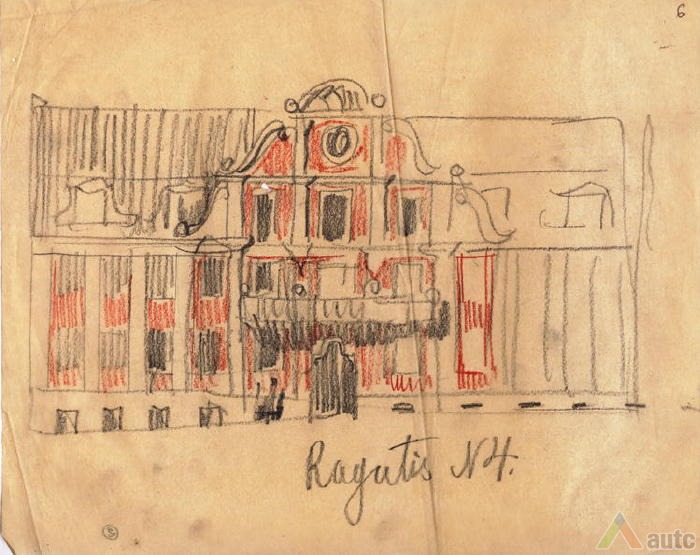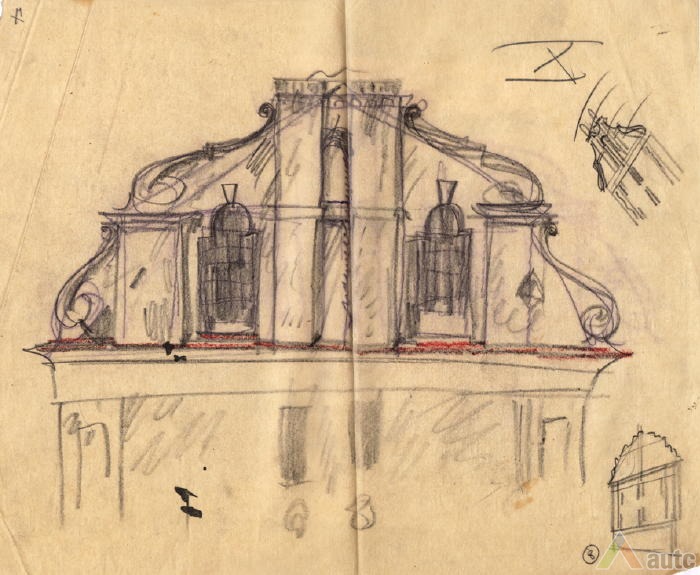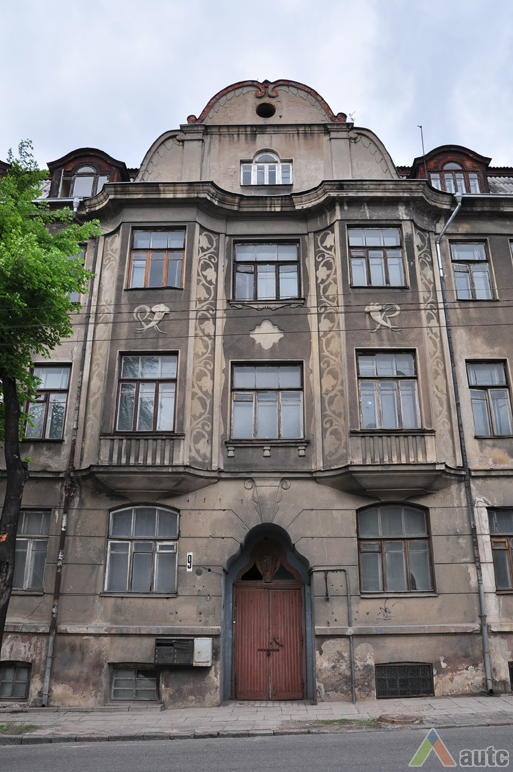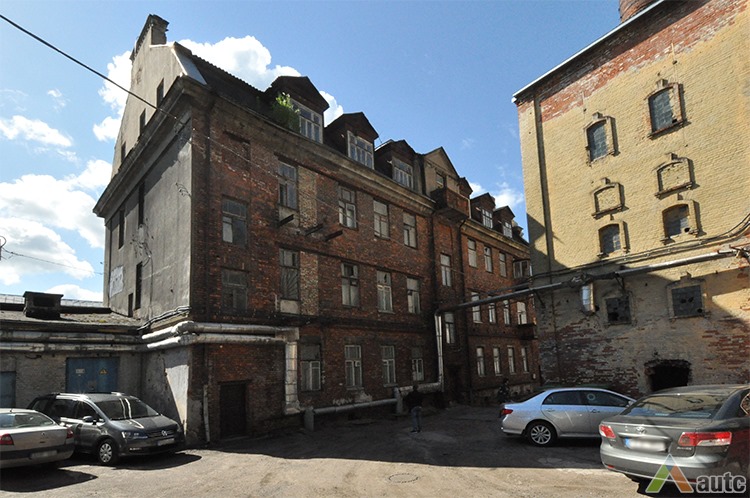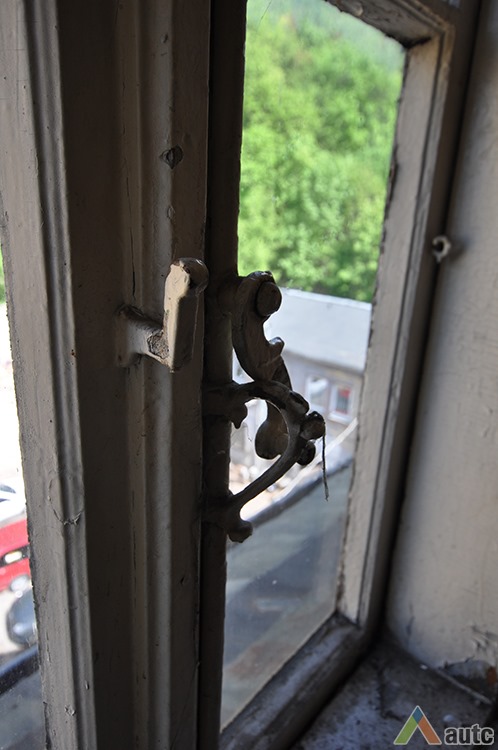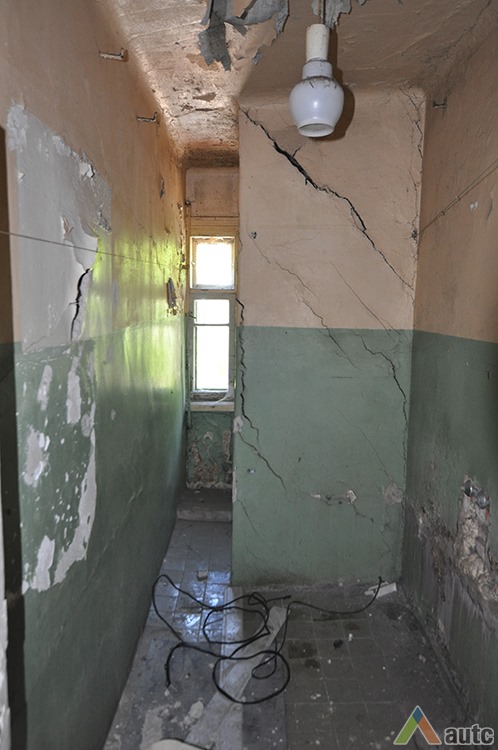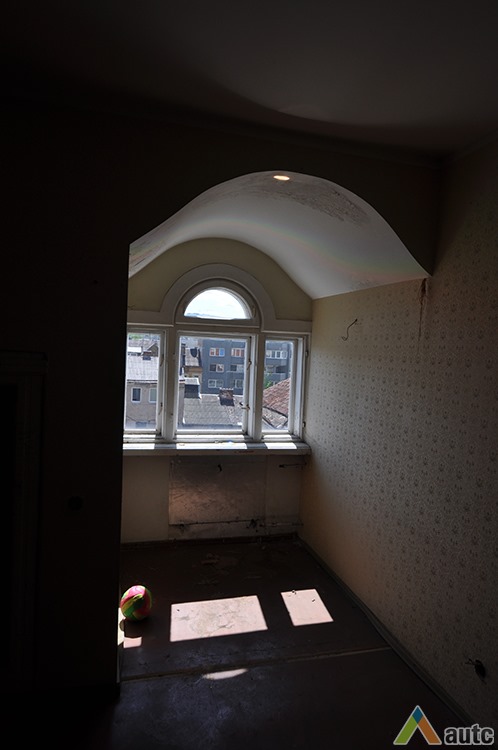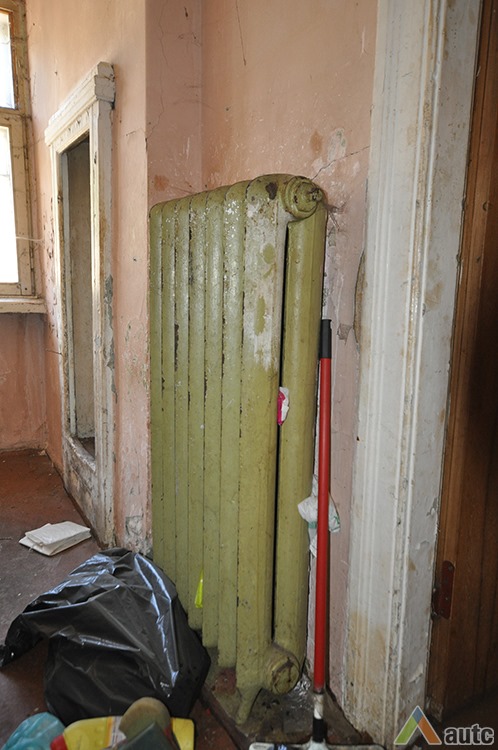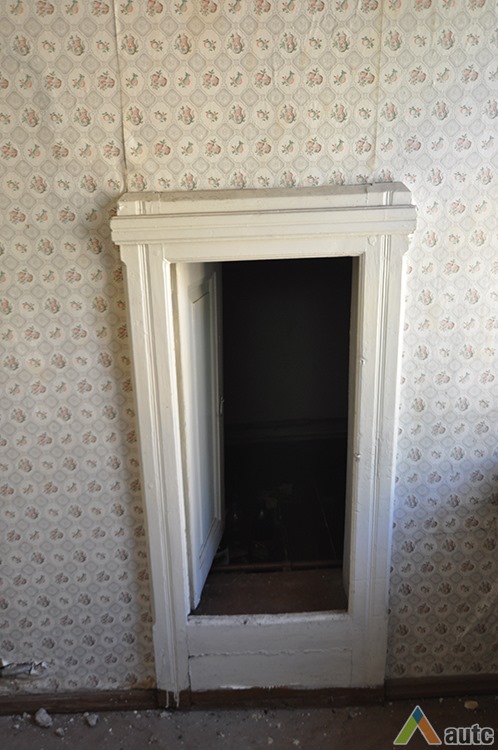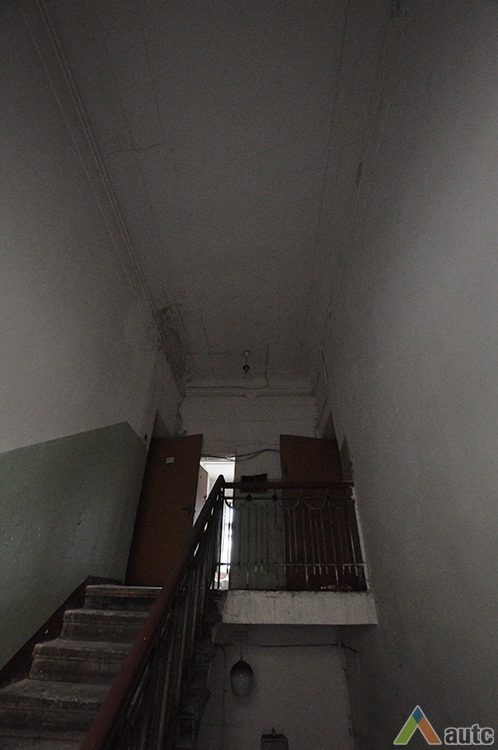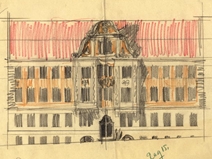













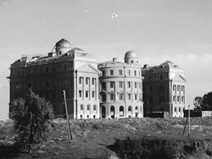
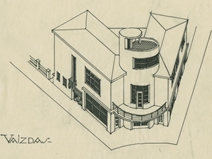
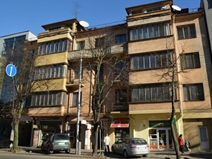

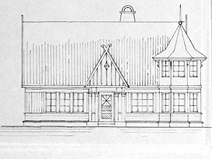


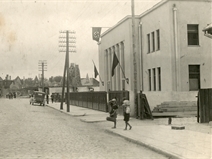
The four-story apartment house built in 1923 on Savanoriai Avenue was one of the first major structures in the temporary capital. Architectural attitudes of the new Lithuanian state established only several years ago were best described by the statement of the Lithuanian Restoration Commissariat (LRC), whose task was to “rebuild Lithuanian cities and villages in an orderly and civilised fashion”, published in Statybos Menas Ir Technika magazine. It states: “we should not embrace Russian architecture which they have left behind in Lithuania. We need to cultivate the spirit of a good and serious Lithuanian.” This desire to establish oneself and to create the architectural face of the new state manifested in the so called “national style”.
Although it is unlikely that a definitive style was ever provided, the “national style” prevalent during the first decade of the independence is usually considered to be Neo-Baroque, represented by the Baroque-style churches in Vilnius and Lithuanian Baroque heritage in general, which is said to be “a beautiful and a common Lithuanian form”. This form was associated with “traditional symbols taken from farmhouses built in the province”. This was a way of “building an architectural bridge to our past”. Ragutis House, designed by some of the most prominent architectural professionals of that time Vladimiras Dubeneckis, Mykolas Songaila and Adolfas Kelermileris (technical maintenance of the construction was carried out by a lesser-known architect J. Levinson), is one of the most obvious examples of the Lithuanian national policy expressed in architecture.
Despite its rather typical function and planned structure, the house became a quite important demonstration of how that “good and serious Lithuanian spirit” should be encouraged. For example, in his fundamental article titled “On Our Architecture”, V. Dubeneckis mentions that the face of Ragutis House “connects us with Kaunas Baroque traditions”. Later Baroque was recurred in many “national style” objects. Besides Baroque, Ragutis House is also enhanced by elements of folk art: “bay windows decorated with tulip ornaments, central windows with patterns resembling wood carvings”.
During the Soviet period in mid-fifties the building was rearranged into Food Industry Technical College, and later into an apartment house for factory’s workers. Nowadays, although declared a cultural heritage, the house is abandoned.
Vaidas Petrulis


